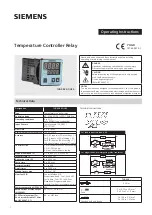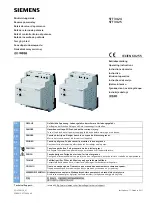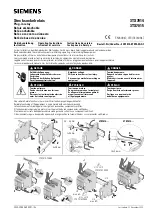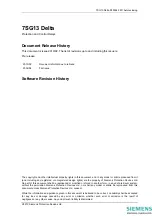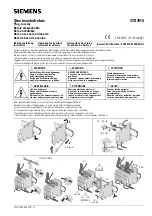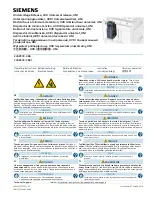
7) Fault Stimulation
Remain in the Automatic mode. Using a short wire with both ends strip of insulation, connect one
end to negative terminal T01. Touch the other end to Low Fuel Level alarm input T16. If the
LFL
parameter is set to ‘0’, then the display remain at
Aut
but alarm bell sounds and Low Fuel Level
fault lamp flashes. If the
LFL
parameter is set to ‘1’, then the display flashes
LFL
, alarm bell
sounds and Low Fuel Level fault lamp flashes. Press and release the
MFB
button once to accept
the alarm. Bell is silenced and Low Fuel Level fault lamp remain lighted.
Next, touch the Over Speed alarm input T15. Notice how the display shows
LFL
but flashes the
OSP
, the same with the fault lamps. Alarm bell sounds again. The DAMF-5 can differentiate a new
fault once the old fault was accepted. Press and release the
MFB
button once to accept the alarm.
Now, touch the High Water Temperature alarm input T14 follow by External Fault Alarm alarm
input T12. Notice again how the display shows
LFL
follow by
OSP
but flashes
HWT
and
EFA
,
the same with the fault lamps.
HWT
and
EFA
are treated as new faults.
Note;
EFA
does not have fault indicating lamp. Its fault lamp or lamps is located at the external
alarm annunciator unit which is added when the local fault indication in the DAMF-5 is
insufficient. Press and release the
MFB
button twice to accept and reset the alarm. The display
reverts back to
Aut
.
To stimulate Fail To Start, you have to prepare a jumper wire from
SFC
input T04 to negative.
This jumper connection can be done at the Termination Connectors side. If this test is done at site
where the gen-set is connected and ready to start, remember to switch off the Starter Control
MCB
.
Assuming that all parameter are set at default, to begin Fail To Start test, connect the jumper wire
to negative. The display shows the
SFt
count down follow by the
Crt
count down and
rSt
count
down. The
Crt
count down and
rSt
count down is repeated 6 times before Fail To Start alarm is
triggered. Notice the followings before the alarm is triggered, the Fuel Solenoid LED is lighted,
FSR
relay is energized, when
Crt
count down begins, the Starter LED is lighted and
STR
relay
energizes, when
rSt
count down begins, the Starter LED is off and
STR
relay de-energizes. Once
the alarm is triggered, the display flashes
FtS
, alarm bell sounds and Fail To Start fault lamp
flashes. Press and release the
MFB
button twice to accept and reset the alarm The display reverts
back to
Aut
. At this stage the
LOP
fault cannot be tested because the gen-set did not start. LOP
fault test is only done after Automatic Run. Do not remove the
SFC
input T04 jumper wire.
8) Automatic Run
Remain in the Automatic mode. To stimulate Generator Run, you have to prepare another jumper
wire from
GRR
input T05 to negative. To begin, connect the
SFC
input T04 jumper to negative.
The display shows the
SFt
count down follow by the
Crt
count down. During the
Crt
count down,
connect the
GRR
input T05 to negative. The display shows the
OPt
count down follow by
run
with the moving
_. _. _.
Note, the Fuel Solenoid LED is lighted. At this stage the
LOP
fault can be
tested. Use the negative T01 wire and touch the
LOP
alarm input T13. The display shows the
ESt
count down, Fuel Solenoid LED off, Energize Stop LED lighted and
LOP
fault lamp flashes. After
count down, the Energize Stop LED is off and the display flashes
LOP
. Disconnect the
SFC
input
T04 and
GRR
input T05 jumper wires from negative. Press and release the
MFB
button twice to
accept and reset the alarm. During the
ESt
count down, the alarm cannot be accept or reset.
9) Automatic Shutdown
Remain in the Automatic mode. Repeat the Automatic Run until the display shows
run
. To begin,
disconnect the
SFC
input T04 jumper from negative. The display shows the
Sdt
count down follow
by the
ESt
count down. Notice, when
ESt
count down starts, Fuel Solenoid LED off, Energize
Page 9 of 12
HOKKIM
giving you control
Control & Protection Relays

















